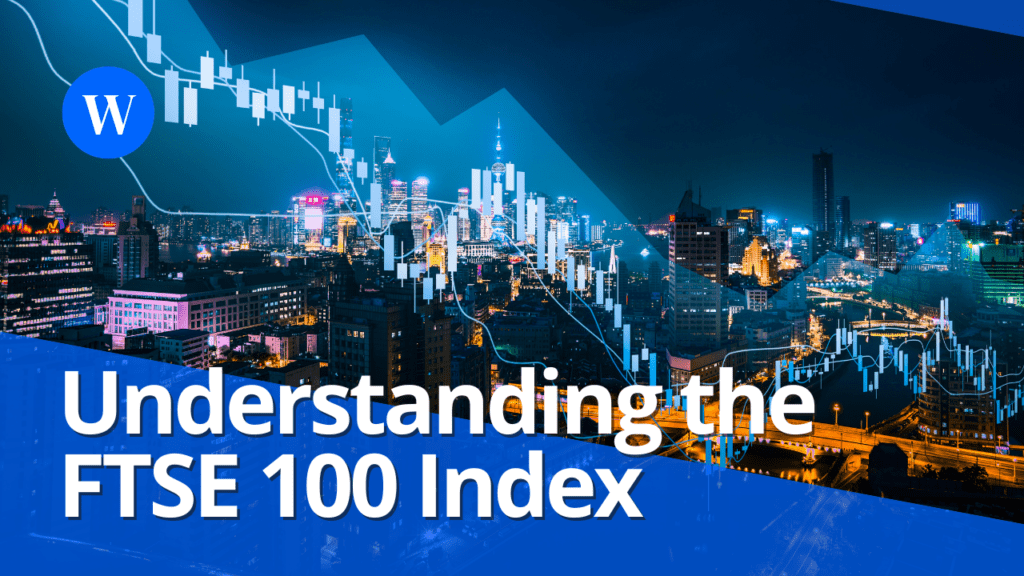Introduction
The FTSE 100 index is a benchmark for the UK inventory market, including the a hundred largest businesses listed on the London Stock Exchange with the aid of marketplace capitalization. As an economic indicator, the FTSE 100 provides insights into the fitness of the UK economic system and serves as a barometer for investor sentiment. This article delves into the arena breakdown of the FTSE 100, analyzing the performance and developments within various industries, as well as imparting marketplace insights which could resource buyers in making knowledgeable choices.
Understanding the FTSE 100 Index

The FTSE 100 changed into launched in January 1984, and it has in view that end up a key index for each home and global traders. It is calculated in actual-time and reflects the overall performance of big-cap stocks, making it a crucial device for knowledge marketplace dynamics.
Composition of the FTSE 100
The FTSE 100 includes agencies from various sectors, every contributing in a different way to the general index overall performance. The key sectors represented in the index include:
- Financials
2. Consumer Goods
3. Healthcare
4. Energy
5. Utilities
6. Telecommunications
7. Industrials
8. Materials
9. Consumer Services
10. Technology
Each area’s performance can notably effect the index as an entire, leading to a complex interplay of monetary factors that buyers should recollect.
Sector Breakdown
1. Financials
The financial zone is a dominant force within the FTSE one hundred, comprising banks, insurance companies, and investment companies. Notable corporations include HSBC, Barclays, and Lloyds Banking Group.
Performance Analysis
Market Trends: The monetary sector’s overall performance is intently tied to hobby prices, regulatory modifications, and monetary increase. With the Bank of England’s financial policy influencing lending quotes, banks can see their income margins vary for that reason.
Investment Sentiment: Investors often view economic stocks as barometers for monetary health. A growing hobby rate surroundings can lead to better income for banks, whilst lower quotes may additionally compress margins.
Key Takeaways
Impact of Inflation: Persistent inflation can result in hobby price hikes, potentially benefiting the economic sector.
Regulatory Environment: Changes in regulations, in particular post-Brexit, may want to have an effect on operations for economic establishments.
2. Consumer Goods
The client goods zone consists of companies that produce important and non-vital items. Key players include Unilever, Diageo, and British American Tobacco.
Performance Analysis
Resilience: Consumer items generally tend to perform well in financial downturns because of their critical nature. Companies that produce staple goods frequently maintain constant revenues.
Brand Loyalty: Strong brand presence can lead to steady client spending, supplying stability in unstable markets.
Key Takeaways
Shifts in Consumer Behavior: Increasing demand for sustainable and ethically sourced merchandise can form strategies for customer items groups.
E-commerce Growth: The shift towards on line buying has been expanded by using the pandemic, impacting income channels for conventional stores.
3. Healthcare
The healthcare sector inside the FTSE 100 accommodates pharmaceuticals, biotechnology, and healthcare service groups, which include GlaxoSmithKline and AstraZeneca.
Performance Analysis
Innovation and R&D: The zone is pushed by way of innovation, with tremendous investments in research and improvement. Companies that lead in drug discovery regularly see large inventory rate appreciation.
Demographic Trends: An aging populace increases demand for healthcare services, potentially boosting revenues.
Key Takeaways
Regulatory Challenges: Drug approvals and patent laws can considerably impact pharmaceutical agencies.
Global Health Issues: The COVID-19 pandemic has emphasised the significance of healthcare agencies and may lead to elevated funding and interest within the quarter.
4. Energy
The energy quarter includes traditional fossil gas agencies in addition to renewable electricity corporations. Major players encompass BP and Royal Dutch Shell.
Performance Analysis
Volatility in Oil Prices: The strength area is notably sensitive to fluctuations in oil and fuel charges, inspired by way of geopolitical occasions and OPEC choices.
Transition to Renewables: Companies are an increasing number of investing in renewable power assets, which could reshape the world’s landscape in the coming years.
Key Takeaways
Sustainability Focus: The shift toward greener strength is turning into important for investor sentiment, with corporations wanting to evolve to converting guidelines and patron expectancies.
Geopolitical Risks: Conflicts in oil-generating regions can cause sudden rate spikes and impact power inventory valuations.
5. Utilities
Utilities offer crucial offerings such as water, power, and gas. Companies in this zone consist of National Grid and SSE.
Performance Analysis
Stable Revenues: Utility organizations frequently enjoy stable cash flows due to the necessity of their offerings, making them attractive for the duration of market volatility.
Regulatory Framework: The sector is heavily regulated, and modifications in policies can impact profitability.
Key Takeaways
Investment in Infrastructure: Increasing demand for renewable strength sources is pushing utilities to put money into infrastructure upgrades.
Defensive Play: Utilities are frequently considered defensive shares, imparting profits through dividends even in economic downturns.
6. Telecommunications
Telecommunications organizations like Vodafone and BT Group play a vital role within the digital economy.
Performance Analysis
Subscription Models: The shift to subscription-based models gives stable revenue streams, though competition is fierce.
Technological Advances: The rollout of 5G technology gives each possibilities and demanding situations for telecommunications companies.
Key Takeaways
Market Saturation: In mature markets, increase can be restricted, pushing agencies to discover rising markets for enlargement.
Regulatory Scrutiny: Antitrust policies can impact the ability of groups to merge or acquire others, affecting marketplace dynamics.
7. Industrials
The commercial area includes production, creation, and transportation businesses, proposing firms like Rolls-Royce and BAE Systems.
Performance Analysis
Cyclical Nature: The industrial region is pretty cyclical, frequently reflecting broader monetary conditions. During monetary expansions, demand for commercial goods normally rises.
Global Supply Chains: Disruptions in worldwide supply chains, as seen at some stage in the pandemic, can have a significant effect on business performance.
Key Takeaways
Investment in Technology: Increasing automation and efficiency are developments reshaping the industrial landscape.
Government Spending: Infrastructure initiatives and government spending can offer tailwinds for the world.
8. Materials
The substances zone includes organizations concerned in the extraction and processing of herbal assets, such as mining and creation materials. Key players include Rio Tinto and BHP Group.
Performance Analysis
Commodity Prices: The performance of substances corporations is closely stimulated by commodity price fluctuations, driven by using international call for and deliver dynamics.
Emerging Market Demand: Growing economies growth call for for substances, impacting global supply chains and pricing.
Key Takeaways
Sustainability Initiatives: Companies are an increasing number of specializing in sustainable practices to mitigate environmental effect.
Geopolitical Factors: Political instability in resource-wealthy countries can have an effect on supply and charges.
9. Consumer Services
This sector encompasses retail, hospitality, and enjoyment industries, presenting organizations like Tesco and Whitbread.
Performance Analysis
Consumer Confidence: The consumer services quarter is extraordinarily touchy to client sentiment and disposable profits ranges.
Digital Transformation: The shift to on-line purchasing has transformed the retail panorama, necessitating adaptations from traditional retailers.
Key Takeaways
Impact of Economic Cycles: Consumer offerings usually perform nicely throughout monetary growth durations but can go through at some stage in downturns.
Experiential Spending: There is a developing fashion closer to experiences over items, influencing employer techniques.
10. Technology
While no longer as heavily represented as in a few different indices, era organizations like Sage Group and Ocado are making their mark.
Performance Analysis
Growth Potential: Technology corporations frequently show off high growth ability, driven by way of innovation and virtual transformation throughout industries.
Market Volatility: The tech quarter may be volatile, with stock expenses reflecting speedy changes in investor sentiment.
Key Takeaways
Emerging Technologies: Artificial intelligence, system mastering, and blockchain are developments driving increase in the tech sector.
Competition: Rapid technological improvements can result in fierce opposition, affecting market positions.
Current Market Insights

Economic Indicators
As of 2024, several economic indicators are critical for information the FTSE a hundred’s trajectory:
Interest Rates: The Bank of England’s financial policy and hobby costs directly influence borrowing expenses, consumer spending, and corporate profitability.
Inflation: Persistently excessive inflation can erode shopping strength and affect consumer spending, impacting multiple sectors.
Employment Rates: Employment figures mirror financial fitness; low unemployment typically results in better customer spending.
Global Economic Context
The FTSE 100 does now not function in a vacuum. Global financial conditions, alternate relations, and geopolitical tensions can notably influence its performance:
Brexit Impact: The ongoing outcomes of Brexit preserve to form marketplace sentiment and commercial enterprise operations for FTSE 100 agencies, mainly in terms of trade agreements and labor mobility.
Geopolitical Tensions: Ongoing conflicts in key areas can result in volatility in commodity prices and deliver chains, impacting sectors like strength and substances.
Investor Sentiment
Market sentiment can shift rapidly primarily based on information activities, financial records releases, and geopolitical tendencies. Investor sentiment evaluation can offer insights into market developments and capacity zone rotations.
Risk Appetite: During unsure instances, buyers may also gravitate in the direction of shielding sectors like utilities and client goods, even as greater aggressive buyers might are looking for increase in technology or substances.
Market Rotation: Shifts in sentiment can result in sector rotations, impacting inventory costs within the FTSE a hundred.
Conclusion
The FTSE 100 serves as a important indicator of the UK financial system, with its zone breakdown providing invaluable insights into market dynamics. Understanding the performance of person sectors lets in buyers to make informed choices in an ever-converting financial panorama.
While the financials, consumer goods, and healthcare sectors stay dominant, emerging trends in generation and sustainability are reshaping the landscape. Investors must pay near interest to the evolving market conditions, geopolitical tendencies, and macroeconomic signs which could affect region overall performance.
Diversification throughout sectors can mitigate dangers, particularly in uncertain times. As the UK economic system navigates submit-Brexit demanding situations, inflationary pressures, and a capability recession, investors ought to remain agile, adapting their strategies to harness possibilities at the same time as dealing with dangers. Ultimately, a comprehensive know-how of the FTSE one hundred’s zone breakdown can empower traders to make strategic choices, aligning their portfolios with market traits and financial realities.
By staying informed approximately quarter-particular traits and retaining a forward-looking perspective, buyers can better position themselves for fulfillment inside the complex and dynamic international of finance. The FTSE 100 now not handiest reflects the health of the United Kingdom economy but also serves as a microcosm of world marketplace traits, making it a essential focal factor for buyers worldwide.
FAQs on the FTSE 100: Sector Breakdown and Market Insights
1. What is the FTSE 100?
The FTSE 100 is a stock marketplace index that represents the one hundred biggest agencies listed at the London Stock Exchange with the aid of market capitalization. It serves as a key indicator of the United Kingdom inventory marketplace’s performance and common economic health.
2. How is the FTSE 100 calculated?
The FTSE 100 is calculated in real-time based available on the market capitalization of its constituent organizations. The index is weighted by market cap, that means large organizations have a more affect at the index’s actions.
3. What sectors are protected inside the FTSE 100?
The FTSE a hundred consists of various sectors, along with:
- Financials
- Consumer Goods
- Healthcare
- Energy
- Utilities
- Telecommunications
- Industrials
- Materials
- Consumer Services
- Technology
4. Why is quarter breakdown essential?
Understanding the sector breakdown enables traders perceive developments, risks, and possibilities inside the market. It allows for greater informed funding decisions primarily based on the overall performance of particular industries.
5. How does financial data have an effect on the FTSE 100?
Economic indicators inclusive of hobby quotes, inflation, and employment fees can extensively impact investor sentiment and corporate profitability, for this reason affecting the overall performance of the FTSE 100.
6. What factors have an impact on the overall performance of character sectors?
Each region is inspired with the aid of unique elements:
- Financials: Interest quotes, regulatory modifications.
- Consumer Goods: Consumer behavior, emblem loyalty.
- Healthcare: R&D funding, demographic tendencies.
- Energy: Oil prices, geopolitical occasions.
- Utilities: Regulatory surroundings, infrastructure investment.
- Telecommunications: Technological advancements, competition.
- Industrials: Economic cycles, deliver chain dynamics.
- Materials: Commodity prices, global call for.
- Consumer Services: Consumer confidence, digital transformation.
- Technology: Innovation, competition, and marketplace volatility.
7. What have to buyers don’t forget whilst investing in the FTSE a hundred?
Investors need to consider:
- Diversification throughout sectors to mitigate risks.
- Economic indicators and market developments.
- Long-term vs. Quick-time period funding goals.
- Current events and geopolitical tendencies.
8. How can I music the overall performance of the FTSE 100?
The overall performance of the FTSE a hundred can be tracked via economic news web sites, inventory market apps, and funding platforms. Many brokerage corporations provide actual-time records and analysis.
9. Is the FTSE 100 an amazing funding?
Whether the FTSE a hundred is a great investment relies upon on man or woman financial goals, risk tolerance, and market situations. It can offer exposure to big-cap UK companies, but investors need to conduct thorough studies and bear in mind diversifying their portfolios.
10. How does Brexit impact the FTSE 100?
Brexit keeps to persuade the FTSE 100 with the aid of affecting trade relationships, regulatory environments, and investor sentiment. Companies with significant global publicity may additionally face each demanding situations and opportunities because the marketplace adapts to new conditions.



